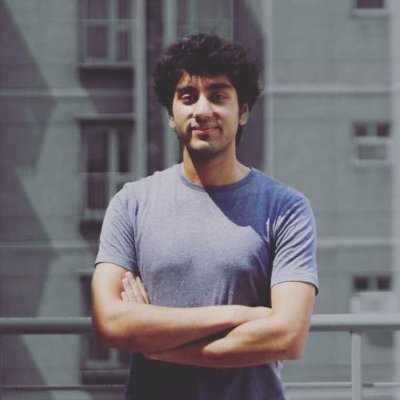
Sateesh Kumar
@sateeshk21
Followers
398
Following
1K
Media
29
Statuses
107
Computer Vision, Robotics | CS PhD student at @UTAustin | Previous: Researcher @TikTok_US MS CS @UCSanDiego
San Diego, California
Joined August 2019
Which data is best for training few-shot imitation policies for robot manipulation? Some think it’s the data that looks similar, or has similar motion, or comes with related language labels. They are all right AND wrong: depending on the task, sometimes this similarity helps but
1
4
11
A little late to this but excited to share that DataMIL won the best paper at the Data workshop at #CoRL! If you haven't already, check it out! 👇
Ever wondered which data from large datasets (like OXE) actually helps when training/tuning a policy for specific tasks? We present DataMIL, a framework for measuring how each training sample influences policy performance, hence enabling effective data selection 🧵
1
4
13
Sateesh (@sateeshk21) will be presenting COLLAGE at #CoRL2025 today! Check out his presentation and poster (Spotlight 4 & Poster 2)! Project page & code:
Which data is best for training few-shot imitation policies for robot manipulation? Some think it’s the data that looks similar, or has similar motion, or comes with related language labels. They are all right AND wrong: depending on the task, sometimes this similarity helps but
0
2
8
I am presenting COLLAGE 🎨 at @corl_conf today. Spotlight presentation: 3:30 pm Poster: 4:30 - 6:00 pm. Poster #41. COLLAGE 🎨 is a data curation approach that automatically combines data subsets selected using different metrics, by weighting each subset based on its relevance
Which data is best for training few-shot imitation policies for robot manipulation? Some think it’s the data that looks similar, or has similar motion, or comes with related language labels. They are all right AND wrong: depending on the task, sometimes this similarity helps but
0
1
1
📝 Paper: https://t.co/VjKzPvWoQy 🌐 Project page & code: https://t.co/dzCmNpks4c Work done with my wonderful collaborators at @UTAustin: @ShivinDass, @geopavlakos and @RobobertoMM. Excited to present COLLAGE 🎨 at @corl_conf very soon — Spotlight 4 & Poster 2 on Sept 29!
0
0
2
We evaluate COLLAGE 🎨 on 10 simulated and 6 real-world tasks. It consistently outperforms single-modality retrieval baselines, showing that adaptively combining subset retrieved using different features leads to more effective retrieval for few-shot imitation learning.
1
0
2
The predicted weights indicate how informative each modality’s data is for the task. COLLAGE 🎨 uses them to guide mini-batch sampling, with more relevant data chosen more often.
1
0
2
To predict a subset’s weight, COLLAGE 🎨 trains a lightweight reference policy on each retrieved subset. It then measures task relevance by computing the log-likelihood of target actions under this policy. This strategy is feature-agnostic and avoids needing costly environment
1
0
2
Given a few target demonstrations, COLLAGE 🎨 works as follows: 1️⃣ Retrieve subsets using different retrieval strategies (eg. visual, motion or language similarity) 2️⃣ Predict a task-specific weight for each retrieved subset 3️⃣ Sample batches using a weighted mixture of
1
0
2
The predicted weights indicate how informative each modality’s data is for the task. COLLAGE 🎨 uses them to guide mini-batch sampling, with more relevant data chosen more often.
0
0
0
To predict a data subset’s weight, COLLAGE 🎨 trains a lightweight reference policy on each retrieved subset. It then measures task relevance by computing the log-likelihood of target actions under this policy. This strategy is feature-agnostic and avoids needing costly
1
0
0
Given a few target demonstrations, COLLAGE 🎨 works as follows: 1️⃣ Retrieve subsets using different retrieval strategies (eg. visual, motion or language similarity) 2️⃣ Predict a task-specific weight for each retrieved subset 3️⃣ Sample batches using a weighted mixture of the
1
0
0
The predicted weights indicate how informative each modality’s data is for the task. COLLAGE 🎨 uses them to guide mini-batch sampling, with more relevant data chosen more often.
0
0
0
To predict a data subset’s weight, COLLAGE 🎨 trains a lightweight reference policy on each retrieved subset. It then measures task relevance by computing the log-likelihood of target actions under this policy. This feature-agnostic strategy avoids needing costly environment
1
0
0
Given a few target demonstrations, COLLAGE 🎨 works as follows: 1️⃣ Retrieve subsets using different retrieval strategies (eg. visual, motion or language similarity) 2️⃣ Predict a task-specific weight for each retrieved subset 3️⃣ Sample batches using a weighted mixture of the
1
0
0
Excited to share our work MimicDroid. Humanoid learns by watching human videos!
Intelligent humanoids should have the ability to quickly adapt to new tasks by observing humans Why is such adaptability important? 🌍 Real-world diversity is hard to fully capture in advance 🧠 Adaptability is central to natural intelligence We present MimicDroid 👇 🌐
0
0
1
Shivin and team show how to turn data curation for behavior cloning into a supervised learning problem using DataModels. Clean formulation and strong results!
Ever wondered which data from large datasets (like OXE) actually helps when training/tuning a policy for specific tasks? We present DataMIL, a framework for measuring how each training sample influences policy performance, hence enabling effective data selection 🧵
0
0
3
🤖 Want your robot to grab you a drink from the kitchen downstairs? 🚀 Introducing BUMBLE: a framework to solve building-wide mobile manipulation tasks by harnessing the power of Vision-Language Models (VLMs). 👇 (1/5) 🌐 https://t.co/61eev1Jyvw
7
38
174
Super impressive work on fine-tuning IL policies with RL using sparse rewards!
🚀 Despite efforts to scale up Behavior Cloning for Robots, large-scale BC has yet to live up to its promise. How can we break through the performance plateau? Introducing 🔥FLaRe: fine-tuning large-scale robot policies with Reinforcement Learning. https://t.co/iRC1NTgoFI 🧵
0
0
2



